To other pages
July 16th, 2013
Pinstriping
[Click on the pictures for a bigger view]
Even
though I was feeling pretty good about the way the paint came out
on the tank and fenders, I was totally intimidated by the idea of
pinstriping. I watched a bunch of Youtube videos. I downloaded
some tuotorials. I bought the brushes and paint and reducers.
I practiced. I practiced a lot. Over a few weeks, I
did get a lot better at holding a smooth line with even width,
but I wasn't consistent enough. And all my practice was on a flat
surface in an ideal position. It was becoming obvious that I
wasn't going to get really good at pinstriping any time soon.
I
looked for alternatives. I bought and played with a Beugler
pinstriping machine that uses a paint reservoir that feeds a small
serated wheel which applies the paint. The Beugler takes its own
set of acquired skills to get smooth, consistent lines, but it does
give nice results--but almost too nice. One of the charms of
hand striping is the subtle evidence of brush strokes that
signifies hand work. It's one of the reasons that most
stripers much prefer to stripe on top of the clearcoat rather than
under it.
After much deliberation, I decided to hand stripe with
a striping brush, but with a crutch--to make up for my ineptitude in
fine brush control, I'd use a stencil tape. Stencil tape consists
of two or more thin masking tapes attached to a clear adhesive carrier
tape with precise spacing. The stencil tape is put on the surface
to be striped, and the carrier tape is peeled off.
So here is what I was starting with. All of the color transitions needed a white stripe.
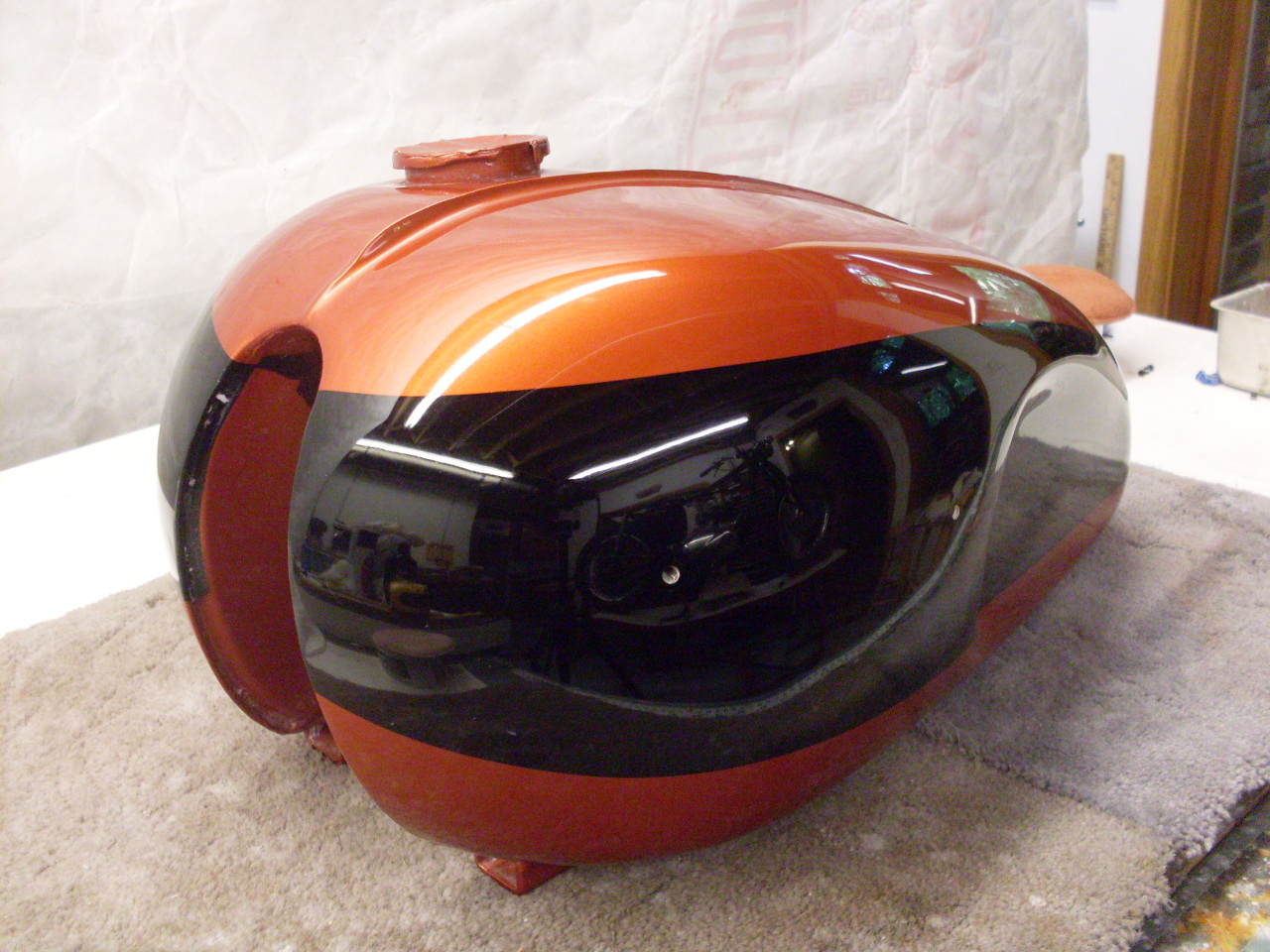

The
stencil tape isn't a stretchy as regular automotive masking tape, so it
has to be sort of coerced into fit to the tighter curves.
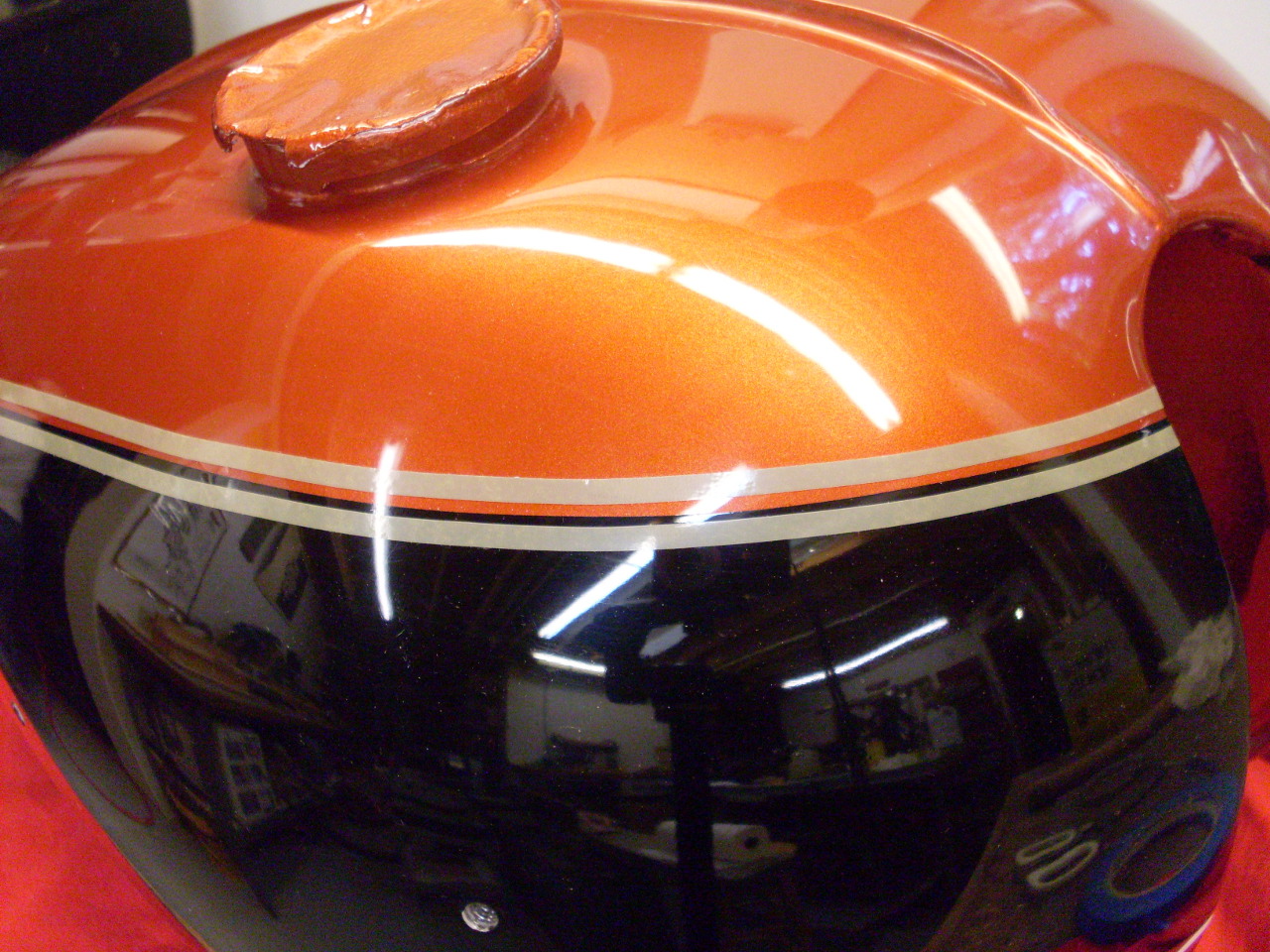
Then a couple of runs of regular masking tape just to protect against a any kind of gross slip-up.
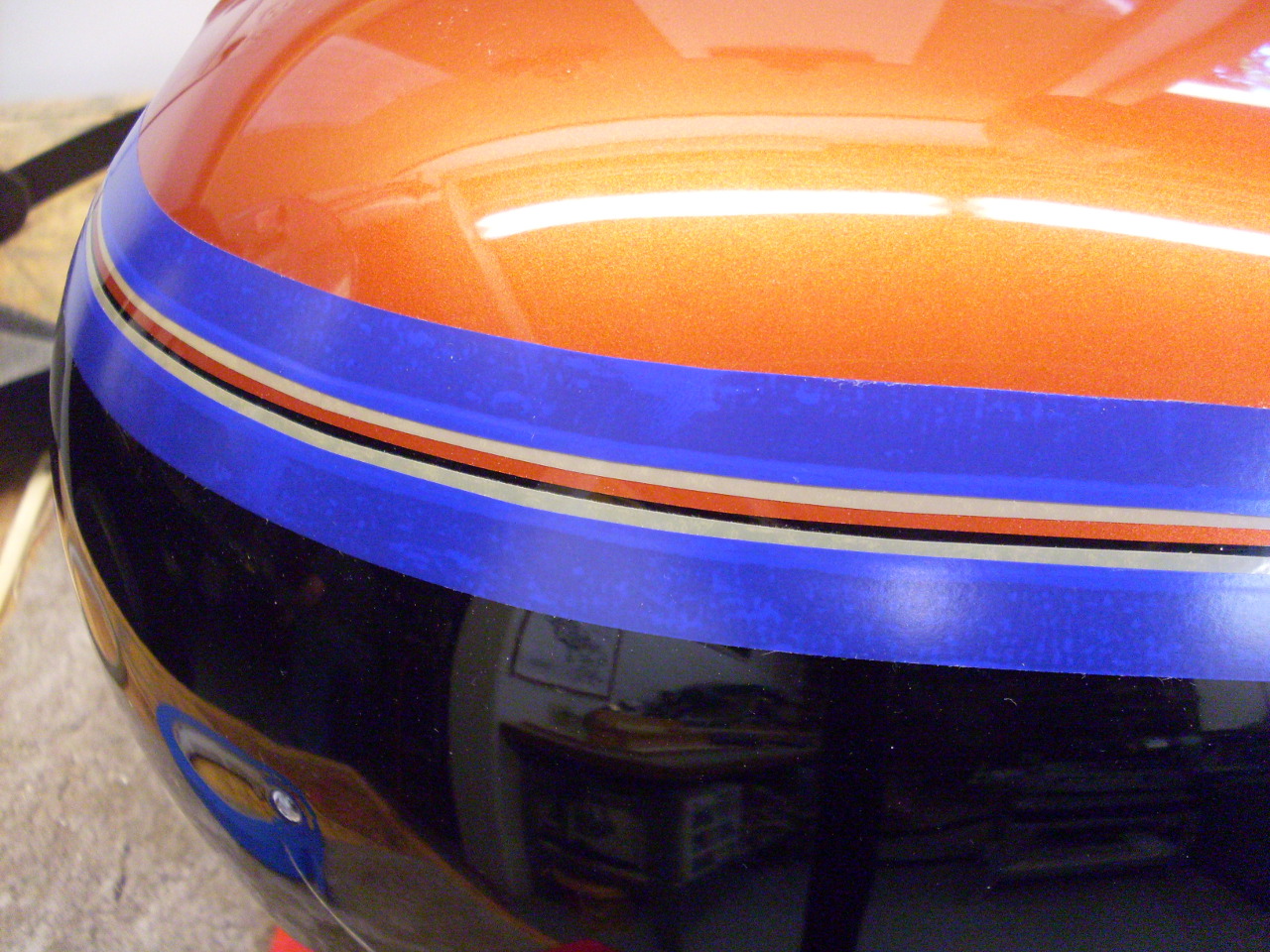
When
I bought my paint from Don Hutchinson, he provided a little vial of
white pinstripe paint. I knew it wasn't going to be near enough
to support all the practicing I was going to have to do, so I matched
it to a One-Shot color. One-Shot is apparently pretty much the
standard paint for pinstripers (and sign painters). The most
popular brush for striping is a Mack, but Kafka makes a series of good
brushes, too. I tried all of these, but don't have enough
experience to offer an opinion. I used the Mack 00 on my stripes.

I
don't have any pics of the actual painting because I was pretty busy.
I used the One-Shot High Temp Reducer to make the paint a fairly
thin and flowable. Using my new half-baked striping skill, I
did my best to put the stripe right down the middle of the stencil in
long smooth motions, just like the real
stripers. I did one stripe at a time, and removed the stencil
immediately, with the idea that the thinish paint would flow a little
at the edges, preventing any telltale evidence of masking.
I know these pics aren't of the same stripe shown above, but the process was the same for all of them.
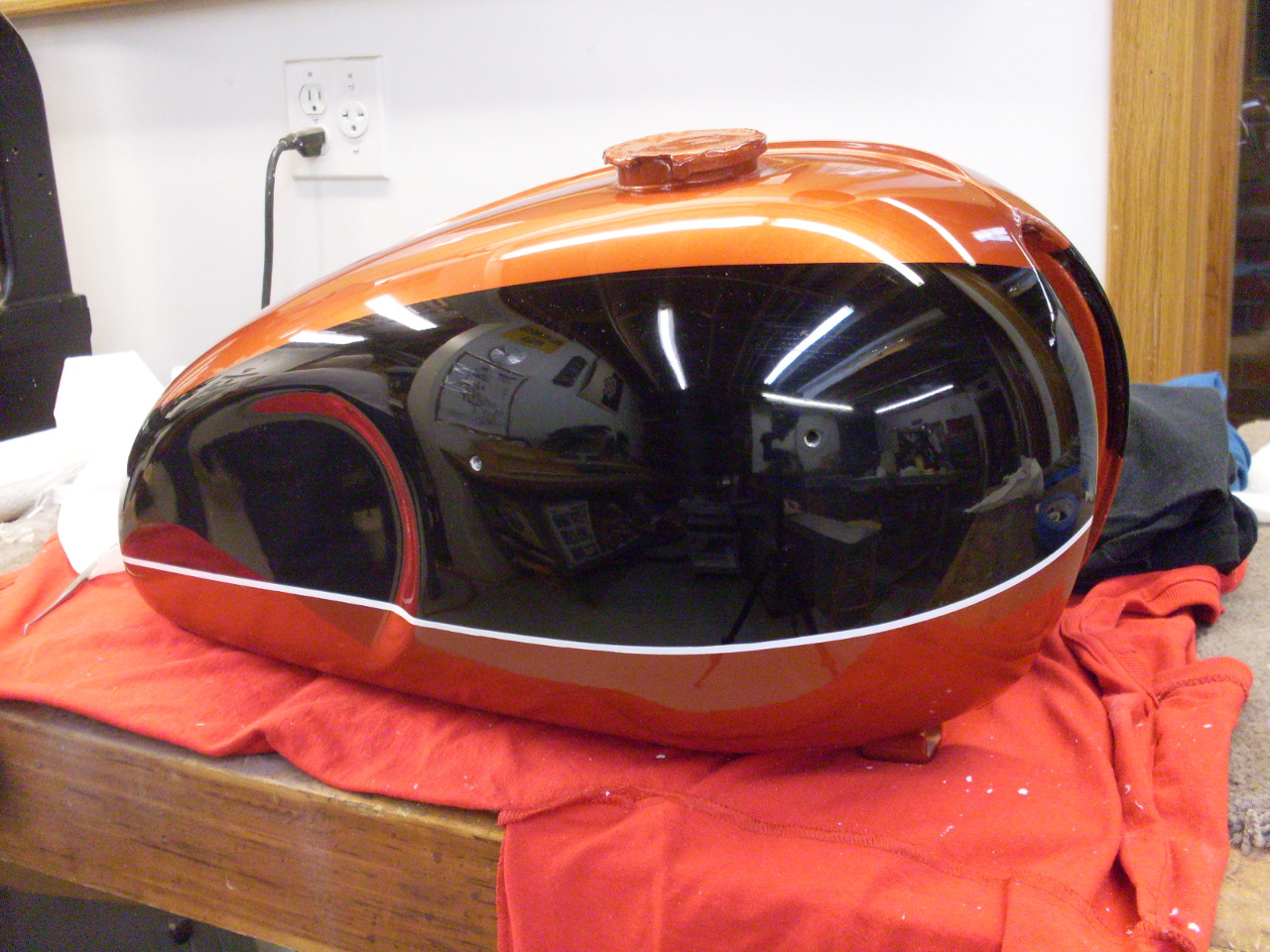
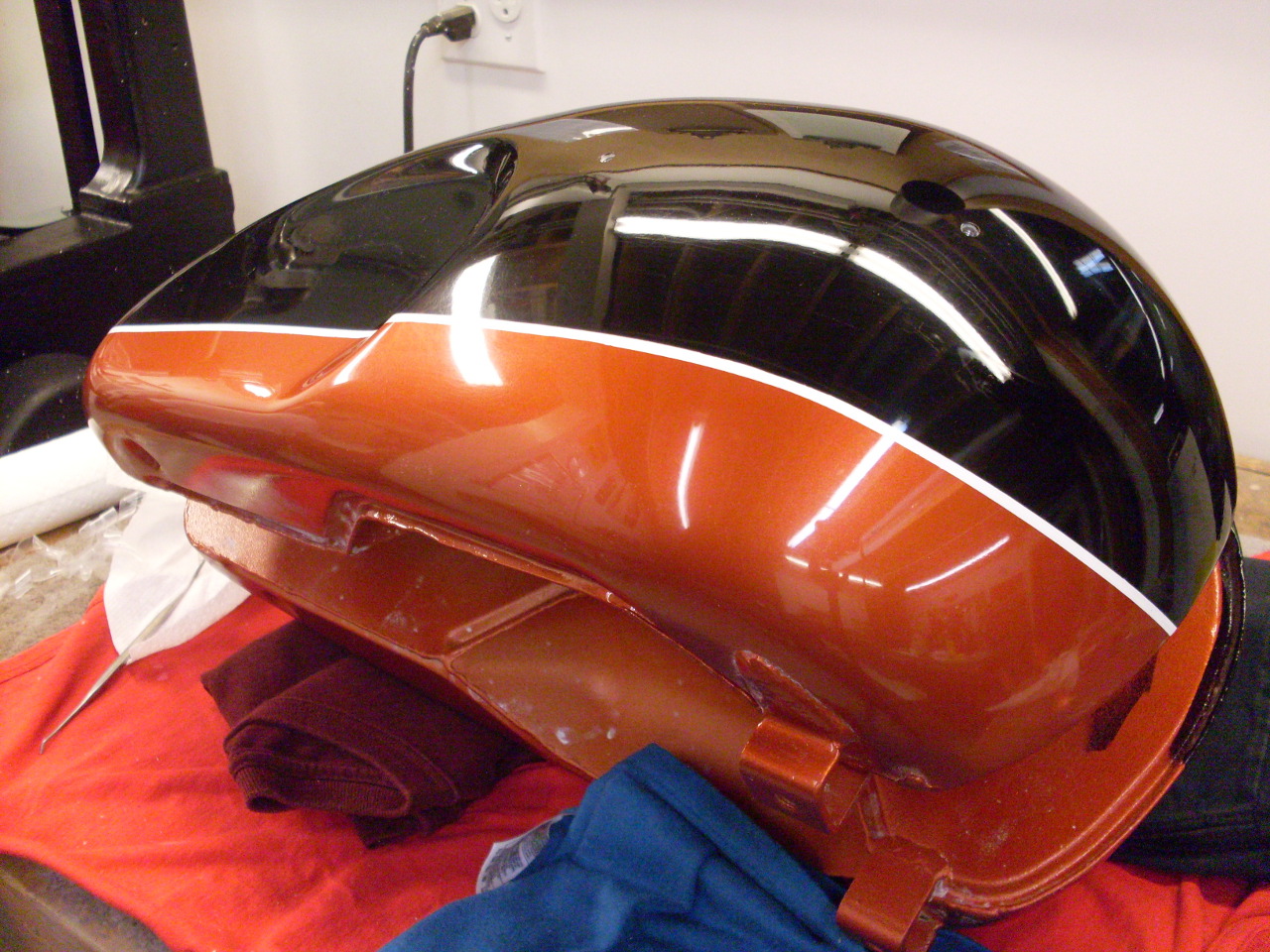
The stripes on the front fender were done the same way.
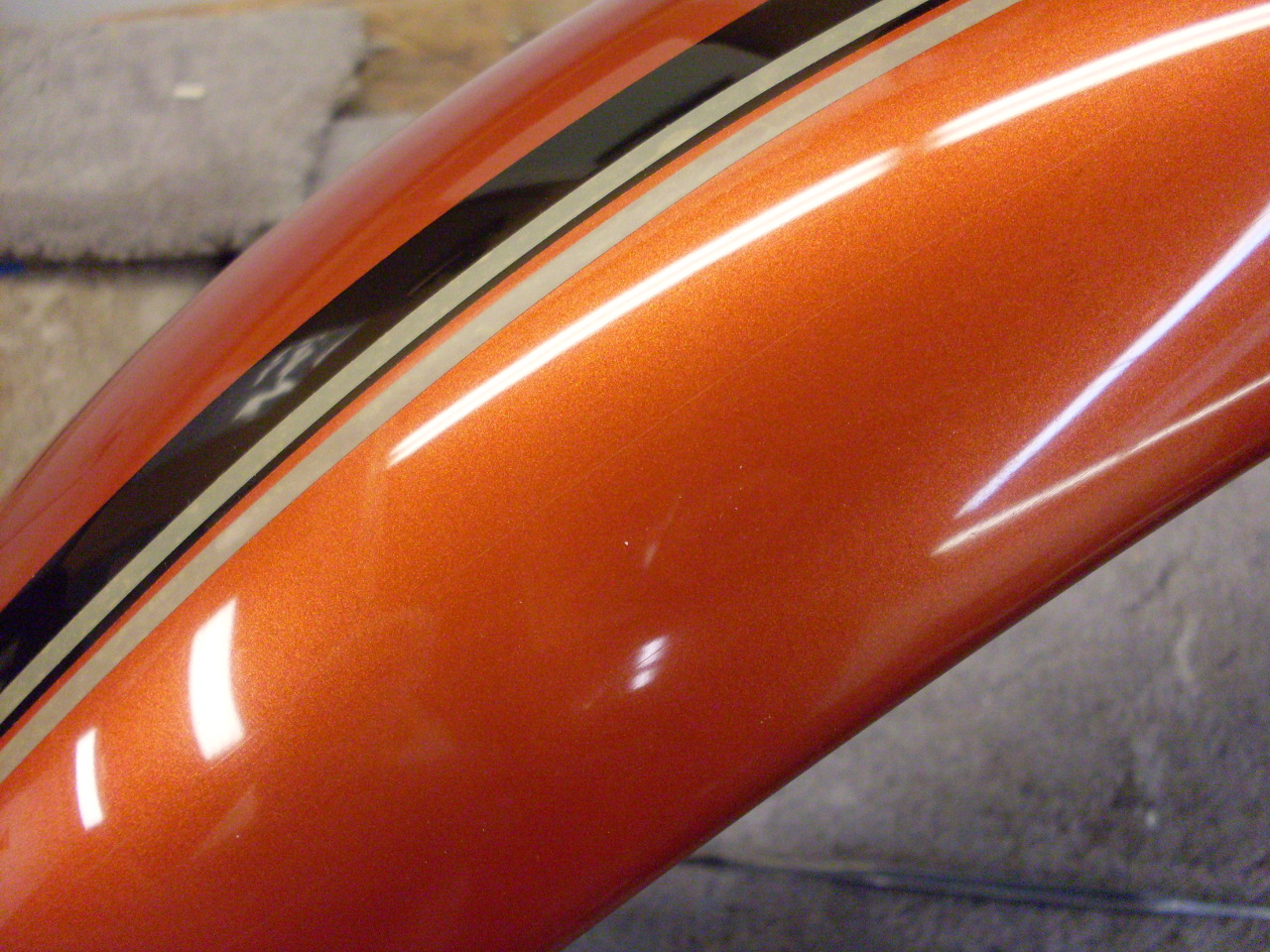
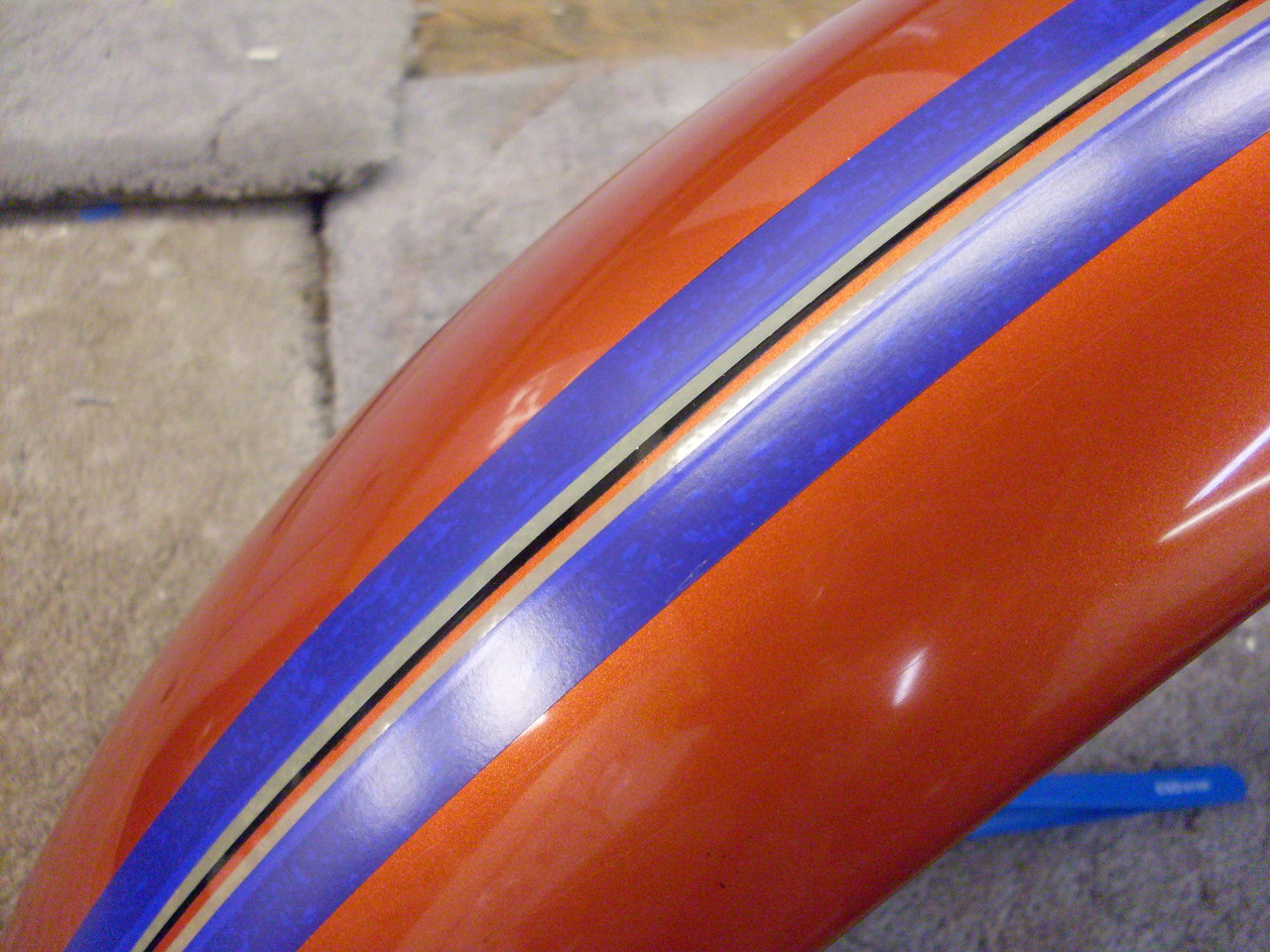
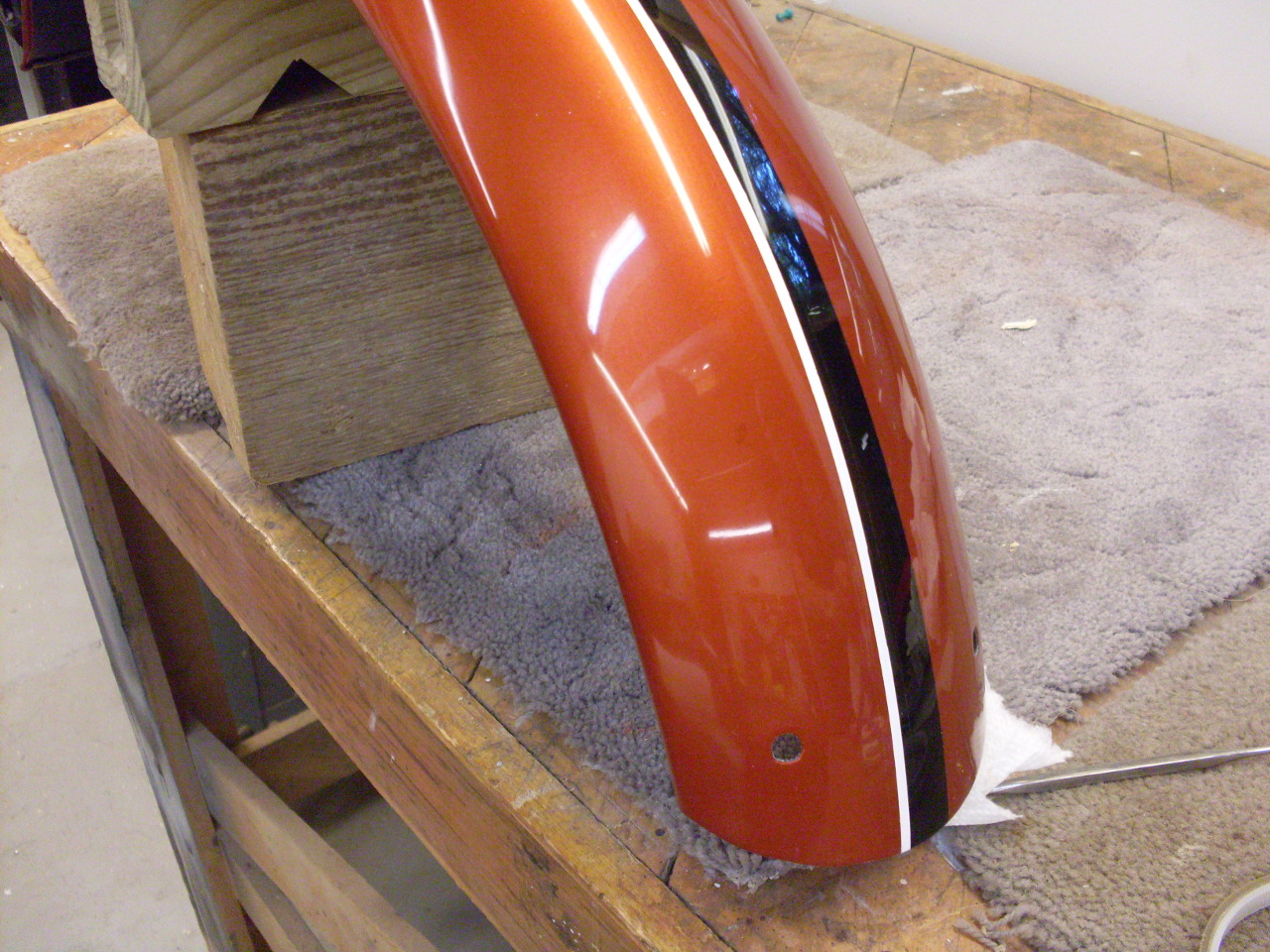
The results:
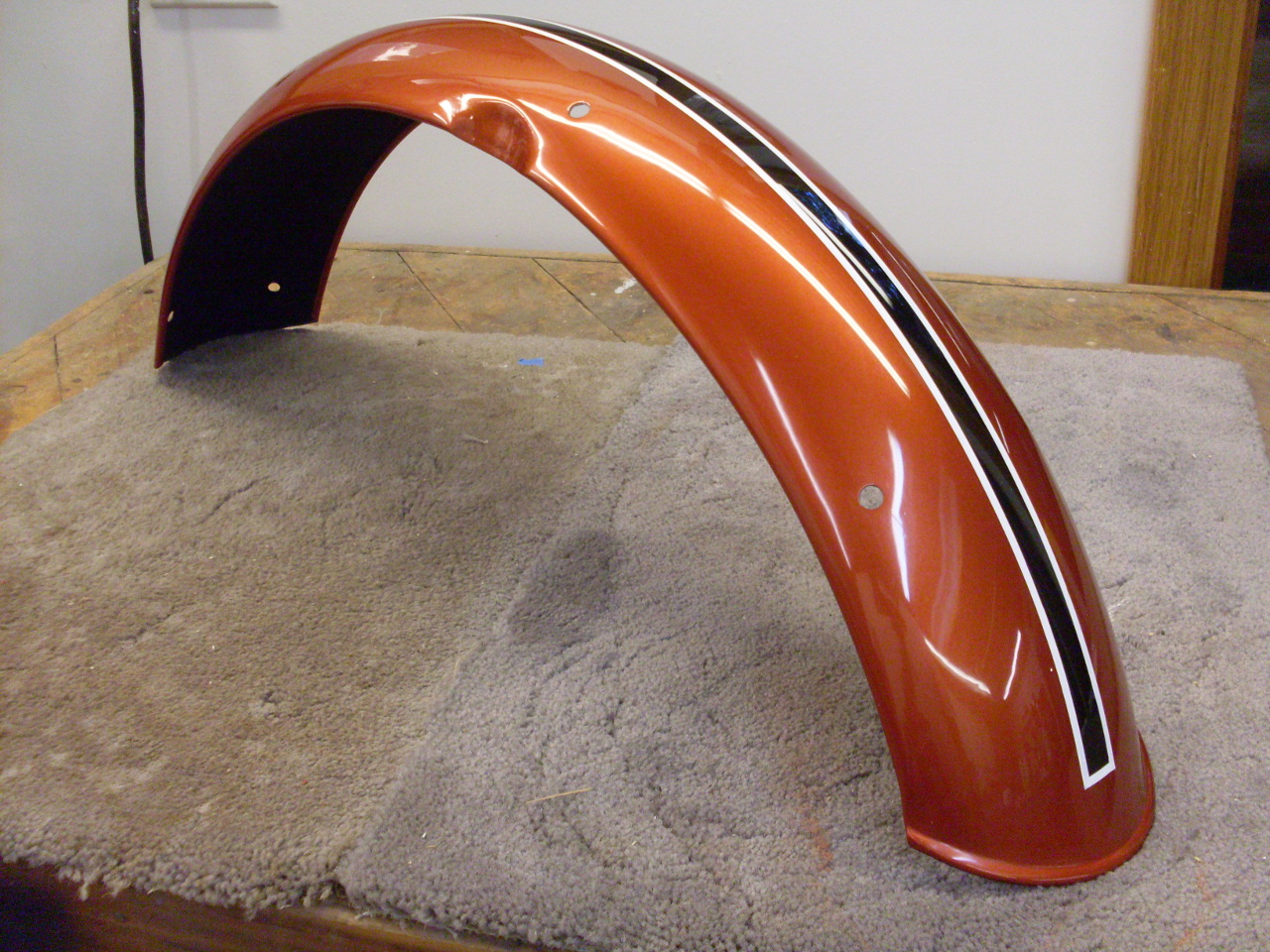
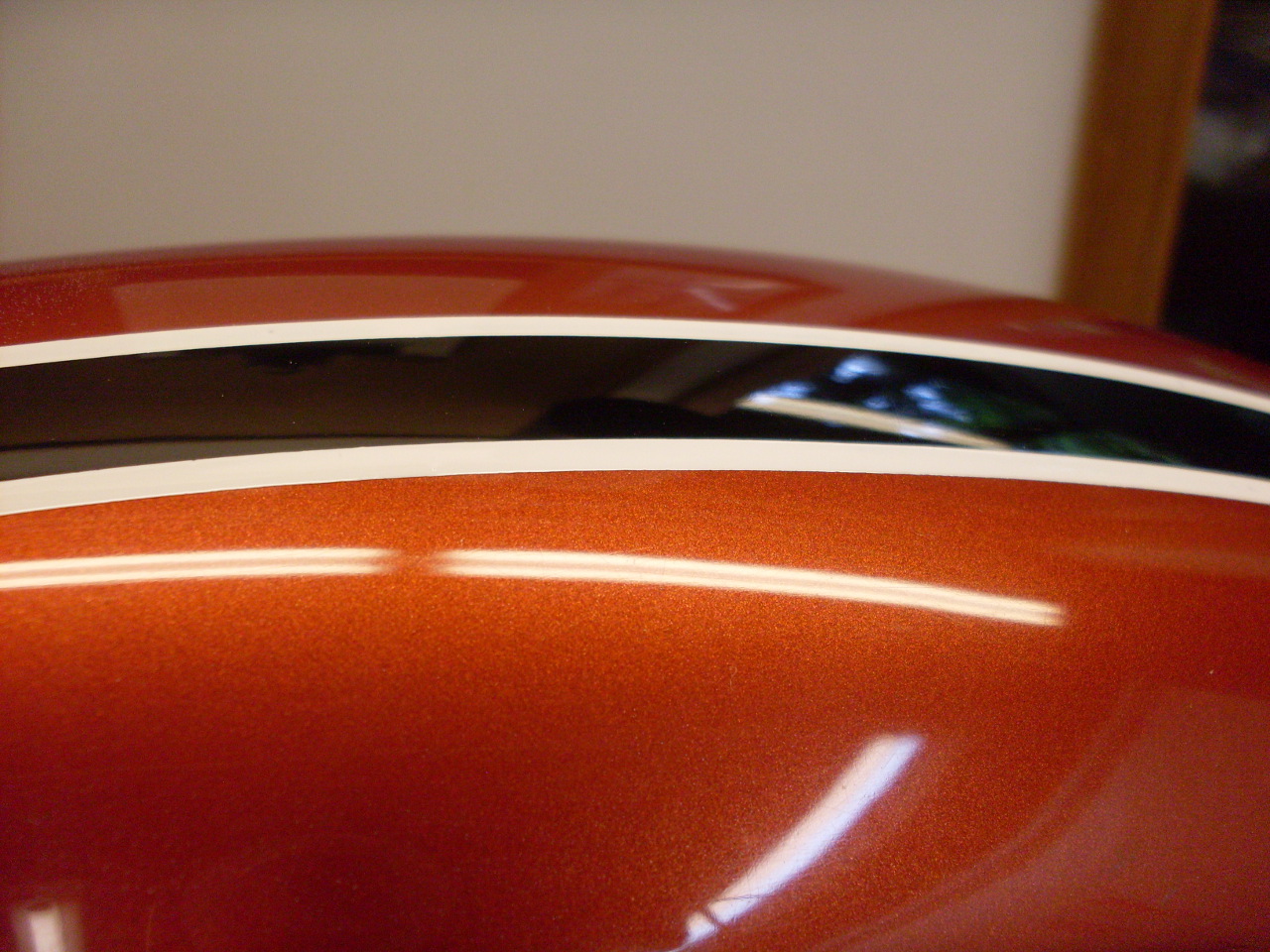

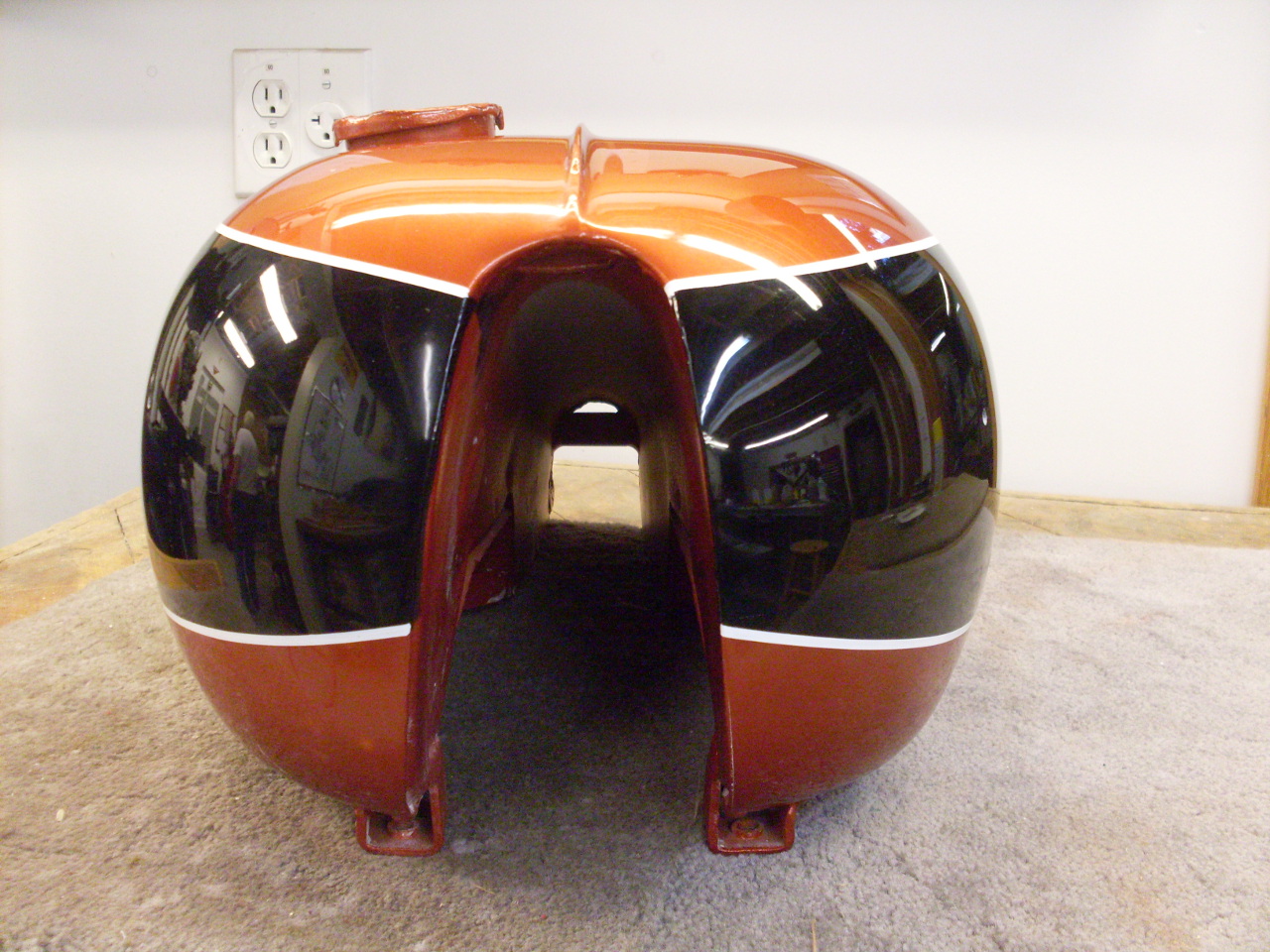
To other pages
Comments to: elhollin1@yahoo.com